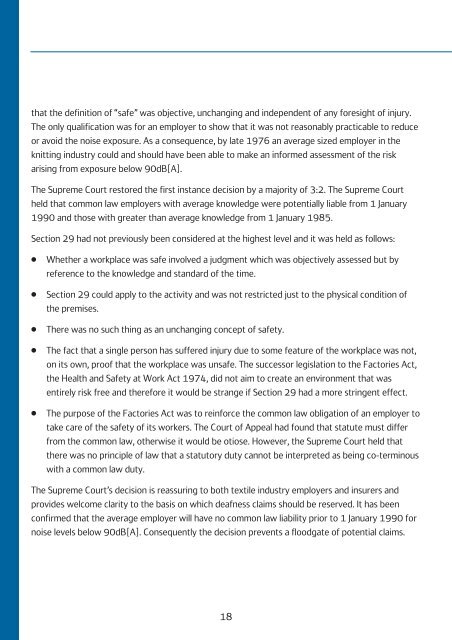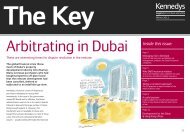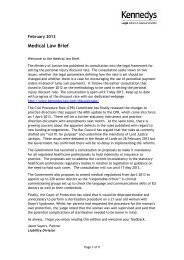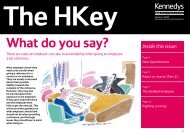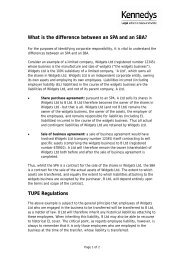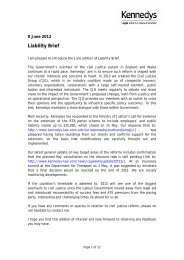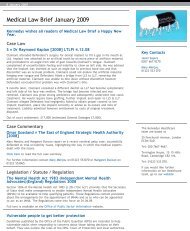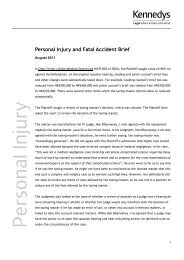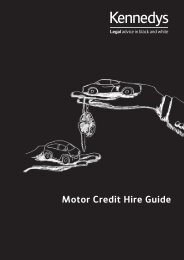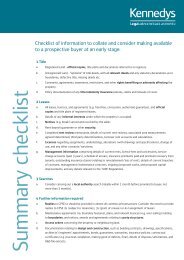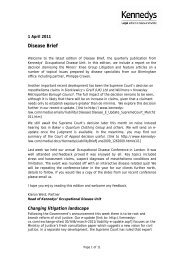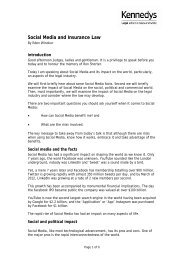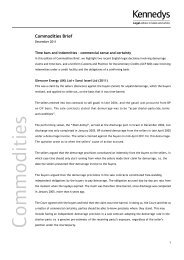Download our Occupational Disease Manual (PDF ... - Kennedys
Download our Occupational Disease Manual (PDF ... - Kennedys
Download our Occupational Disease Manual (PDF ... - Kennedys
You also want an ePaper? Increase the reach of your titles
YUMPU automatically turns print PDFs into web optimized ePapers that Google loves.
that the definition of “safe” was objective, unchanging and independent of any foresight of injury.<br />
The only qualification was for an employer to show that it was not reasonably practicable to reduce<br />
or avoid the noise exposure. As a consequence, by late 1976 an average sized employer in the<br />
knitting industry could and should have been able to make an informed assessment of the risk<br />
arising from exposure below 90dB[A].<br />
The Supreme C<strong>our</strong>t restored the first instance decision by a majority of 3:2. The Supreme C<strong>our</strong>t<br />
held that common law employers with average knowledge were potentially liable from 1 January<br />
1990 and those with greater than average knowledge from 1 January 1985.<br />
Section 29 had not previously been considered at the highest level and it was held as follows:<br />
l<br />
l<br />
l<br />
l<br />
l<br />
Whether a workplace was safe involved a judgment which was objectively assessed but by<br />
reference to the knowledge and standard of the time.<br />
Section 29 could apply to the activity and was not restricted just to the physical condition of<br />
the premises.<br />
There was no such thing as an unchanging concept of safety.<br />
The fact that a single person has suffered injury due to some feature of the workplace was not,<br />
on its own, proof that the workplace was unsafe. The successor legislation to the Factories Act,<br />
the Health and Safety at Work Act 1974, did not aim to create an environment that was<br />
entirely risk free and therefore it would be strange if Section 29 had a more stringent effect.<br />
The purpose of the Factories Act was to reinforce the common law obligation of an employer to<br />
take care of the safety of its workers. The C<strong>our</strong>t of Appeal had found that statute must differ<br />
from the common law, otherwise it would be otiose. However, the Supreme C<strong>our</strong>t held that<br />
there was no principle of law that a statutory duty cannot be interpreted as being co-terminous<br />
with a common law duty.<br />
The Supreme C<strong>our</strong>t’s decision is reassuring to both textile industry employers and insurers and<br />
provides welcome clarity to the basis on which deafness claims should be reserved. It has been<br />
confirmed that the average employer will have no common law liability prior to 1 January 1990 for<br />
noise levels below 90dB[A]. Consequently the decision prevents a floodgate of potential claims.<br />
18


